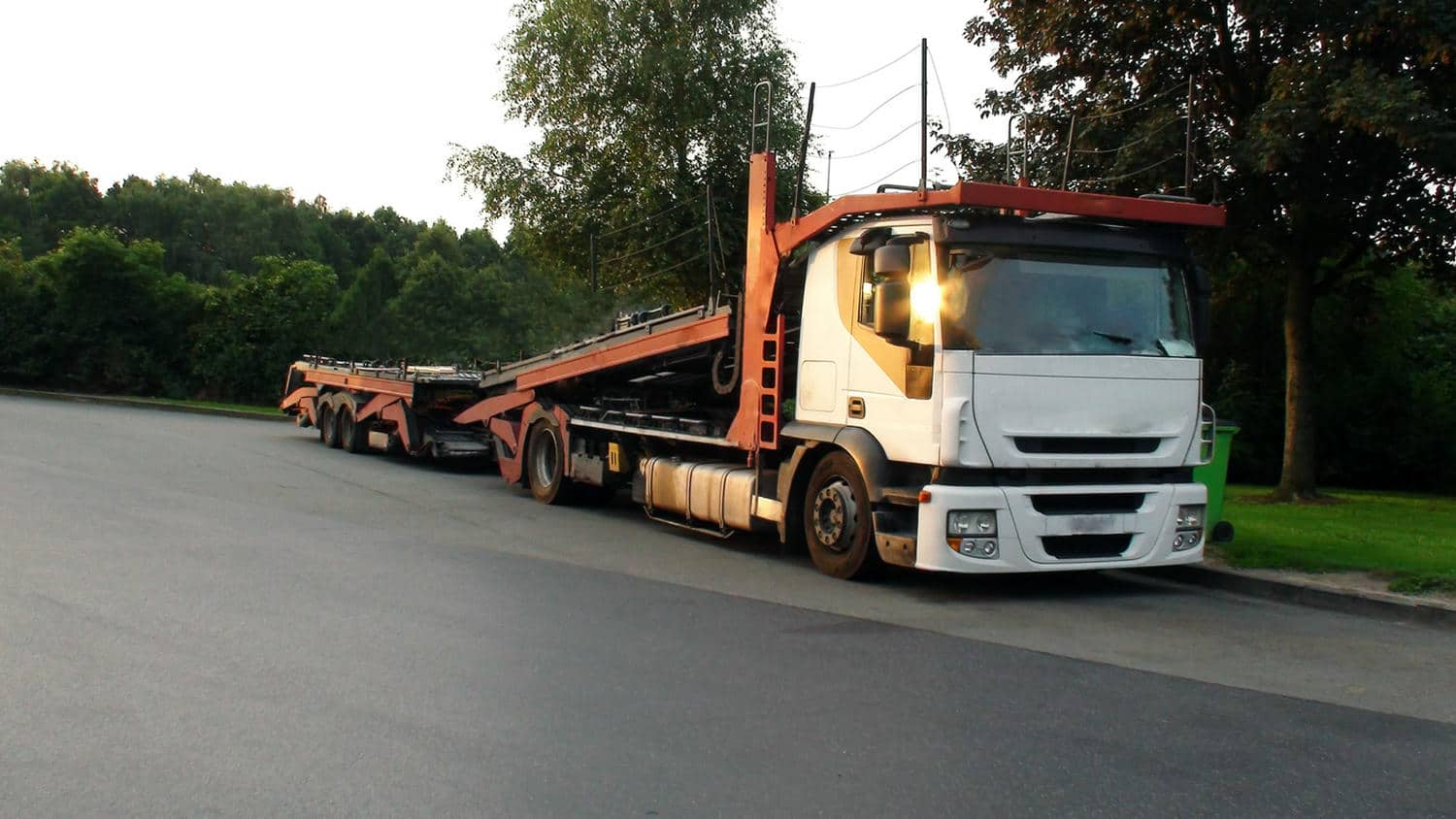Car shipping expenses can vary significantly depending on location. Location plays a major role in determining the cost of auto transport because factors such as distance, geographic challenges, local regulations, and infrastructure all contribute to the final price. Whether you are shipping a sedan across crowded urban highways or a compact car to a remote rural area, understanding these differences is crucial. For businesses and individuals alike, getting a reliable car shipping quote involves considering multiple aspects like toll fees, fuel consumption per mile, and even potential delays due to adverse road debris or weather conditions. In today’s competitive economy—where customer service, accessibility, and economies of scale are fundamental—shipping companies must balance cost, risk, and operational efficiency to satisfy the demands of their clients. This article will provide an in-depth look at how location influences auto transport pricing, affecting everything from pickup routes to transport routes through highways and even port accessibility for overseas shipments. We will explore the impact of distance on expenses, urban versus rural challenges, and how state-specific regulations influence the final car shipping quote. In addition, practical examples and research-backed data will help illustrate why factors like fuel price fluctuations and carrier availability can greatly modify the cost of shipping your vehicle. By the end, readers will gain the insights needed to navigate the complexities of car shipping, how location influences your car shipping expenses, and make informed decisions when planning transportation of their vehicle or freight.

When evaluating car shipping quotes, the location from which you are picking up and delivering your vehicle is a primary cost driver. Shipping from or to metropolitan areas often incurs higher fees due to increased traffic congestion, stricter local regulations, and accessibility challenges in urban centers. Conversely, rural locations may incur longer travel times or require a detour if roads and highway access are less direct. The distance between the pickup point and delivery destination not only affects fuel consumption and mileage fees but also can lead to added expense if extra time is required to negotiate less accessible roads or specialized requirements such as towing or winch service. Established routes with heavy traffic on highways often benefit from economies of scale; however, they are also subject to additional toll fees or road debris management which can increase expenses. Moreover, differences in state-specific regulations and fees mean that some regions with more complex or stringent transport regulations may lead to higher charges from auto transport brokers. In addition, variable factors like congestion during peak hours, efficiency of local logistics, and even weather conditions (e.g., snowbird routes) can influence cost stability and reliability. As car shipping companies strive to offer competitive customer service and transparent pricing, understanding these underlying geographic influences becomes essential for obtaining an accurate car shipping quote and minimizing unforeseen expenses.
The longer the distance covered by a shipment, the higher the overall expense. Distance impacts fuel consumption, vehicle wear and tear, and driver hours. For example, shipping a vehicle from Los Angeles to New York involves crossing multiple states and often requires longer transit times, increasing costs significantly. In addition, auto transport companies calculate mileage fees that are directly related to the total distance of the journey. Beyond basic mileage, extended routes may require additional stops for driver rest breaks, which could further elevate the pricing. Research conducted by the American Transportation Research Institute (ATRI, 2021) indicates that each additional mile can add a marginal increase in cost—sometimes as precise as a few cents—which aggregates over thousands of miles. Moreover, the type of road—whether highways, rural roads, or congested city streets—can influence the duration and complexity of the trip, further raising the expense. Less direct travel routes due to road closures or diversions can also add extra miles. When vendors calculate car shipping quotes, they factor in these additional considerations to provide a more accurate estimate of the expense. For businesses that require recurrent shipments or for individual clients in remote locations, this factor becomes a key determinant in budgeting for transport. Cost adjustments due to distance underscore the importance of planning ahead and obtaining multiple quotes from reliable car shipping companies.
- Longer distances significantly increase overall shipping costs due to added mileage and fuel consumption.
- Additional stops and route deviations further elevate pricing.
- Accurate quotes require comprehensive planning including potential detours and rest stops.
Urban and rural locations pose different challenges when it comes to car shipping. In urban areas, traffic congestion, parking limitations, and restricted access may drive up fees as carriers invest more time to maneuver through busy streets. Cities might also have specific regulations that require pickups or deliveries to be done at designated sites, further complicating logistics and increasing operational expenses associated with towing or winching services. In contrast, rural pickups may offer more accessibility and flexibility due to less stringent urban regulations; however, drivers might have to navigate longer unpaved roads or areas with troublesome road debris, leading to increased mileage and time on the road. Additionally, urban centers often provide better infrastructure for scheduling and real-time communication, which can reduce idle time and increase predictability in transit, ultimately benefiting the customer’s quote. Conversely, rural areas might result in a surcharge due to the less frequent operation of service routes, thereby reducing the economies of scale auto shipping companies can achieve. Furthermore, the difference in local fuel prices or state-specific taxes can lead to variations in shipping costs between urban and rural regions. For instance, metropolitan pickup points may have higher loading fees due to local labor costs, while rural areas might incur fewer additional fees but higher travel time costs. Each scenario requires careful analysis when generating a car shipping quote, ensuring that both urban and rural variables are factored in to achieve a fair and reliable price estimate.
- Urban shipments incur higher fees due to traffic, access issues, and strict regulations.
- Rural shipments benefit from flexibility but might incur surcharges due to extended travel time.
- Differences in local fuel prices and state taxes also affect the overall cost.
Major transport routes, such as interstate highways and freeways, are critical in determining car shipping expenses. Efficient, well-maintained highways allow carriers to move vehicles quickly and reliably over long distances, often reducing the risk and expense associated with delays. In areas with well-established transport infrastructure, carriers can optimize their routes to reduce fuel consumption, leading to lower shipping costs. However, the presence of road tolls, surcharges for heavy vehicle usage, and fees for crossing bridges or tunnels on these routes can add to the overall expense. Moreover, the frequency and reliability of major routes affect the logistics planning for shipping companies. For example, during high traffic congestion times, shipments may be delayed, leading to time-based surcharges that impact the final car shipping quote. Car shipping companies also consider route safety and the likelihood of road debris or hazards when calculating risk; safer routes might warrant lower insurance premiums and thereby reduce the overall expense. In addition, the distribution of highways in coastal versus inland locations could affect pricing if port accessibility is involved for overseas shipments. Research from the U.S. Department of Transportation (DOT, 2022) has shown that route efficiency directly correlates with cost savings by as much as 15% on optimal major highways. Consequently, understanding how these transport routes function—along with their associated fees and risks—provides vehicle owners with the necessary insight to better compare shipping quotes and select the most cost-effective option.
- Major highways reduce shipping costs by enhancing route efficiency and lowering fuel consumption.
- Tolls and additional fees on major routes can increase overall expenses.
- Route safety and reliability are key factors in lowering insurance and delay-related surcharges.
State-specific regulations and fees play a critical role in determining car shipping expenses. Each state in the U.S. has its own set of transportation rules, environmental guidelines, and fee structures that influence auto shipping costs. For example, states with strict emissions standards or higher toll fees will naturally incur higher shipping charges. Regulations that dictate the maximum load, vehicle dimensions, and even driver hours further complicate the cost structure, making it essential for carriers to comply with local laws. In states with advanced infrastructure and more liberal regulatory frameworks, the process might be smoother, resulting in lower overall expenses. Additionally, certain states may mandate extra documentation or inspection fees that add to the auto transport bill. Some regions have seasonal surcharges based on weather patterns, such as winter driving restrictions in colder states which can result in an increase in shipping fees as carriers adapt by using specialized equipment such as winches or snow chains. Insurance requirements may also vary state by state, contributing to the final cost of carrying the vehicle during transport. Compliance with local, state, and even municipal regulations is a resource-intensive process, and these costs are directly passed down to the consumer. A study by the National Conference of State Legislatures (NCSL, 2021) estimated that such regulatory overhead can increase car shipping rates by up to 10% in some regions. Thus, understanding state-specific requirements becomes paramount before finalizing a car shipping quote.
- State regulations and fees directly influence the cost of auto transport.
- Additional costs arise from compliance with varying load, dimensions, and emission standards.
- Seasonal and regional surcharges can add up to 10% extra to the basic shipping rates.
Accessibility challenges significantly impact the overall cost of car shipping. When a vehicle’s pickup or delivery location is hard to access—be it due to narrow lanes in a densely populated urban area or remote rural roads lacking proper infrastructure—transport companies often impose additional fees to cover the extra time, fuel, and specialized equipment required. For instance, if a vehicle is stranded in a mountainous area with steep inclines, the carrier might need to arrange winch services or towing equipment to retrieve the car safely, which directly increases the expense. Accessibility is further impacted by the layout of the location; buildings with limited loading docks, gated communities, or areas with strict security protocols may lead to delays that impact driver schedules and overall transit time, thus warranting surcharges. Conversely, easily accessible locations in major urban centers or at approved terminals ensure streamlined operations, allowing auto transport brokers to offer more competitive quotes. In addition, challenges such as road debris, narrow streets, or infrastructure under construction may create further complications that carriers account for in their pricing models. For commercial shipping companies, these factors are critical in determining the risk and logistical planning necessary for a successful transport operation. Research from the Transportation Research Board (TRB, 2020) illustrates that accessibility challenges can increase operational costs by up to 12% over standard routes. Car shipping companies thereby build these variables into their estimates to ensure timely and secure delivery without compromising customer service or safety.
- Hard-to-access locations lead to additional fees for special equipment and extra time.
- Urban restrictions and remote areas each present unique challenges affecting pricing.
- Research indicates that accessibility issues can elevate costs by up to 12%.

Determining the final car shipping rate involves multiple layers of pricing consideration. Car shipping companies examine vehicle specifics along with operational logistics. Factors such as vehicle size, weight, type, and operational status (operable versus inoperable) all contribute significantly. Moreover, there is a difference in pricing between open and enclosed transport options. Open carrier car transport, which exposes the vehicle to weather and road debris, is generally less expensive compared to enclosed transport designed to shield the car from elements. Seasonal demand heavily influences pricing—during peak moving periods, such as summer or holidays, shipping rates can surge due to increased competition for carrier availability. These factors do not exist in isolation; rather, they interact with each other. For instance, a larger vehicle that is heavier might require an enclosed carrier, especially if the client values minimizing exposure to road debris. Additionally, vehicle type such as luxury, classic, or modified cars might necessitate extra care, driving up the price further. Studies on the auto shipping industry conducted by the Auto Transport Association (ATA, 2022) reveal that vehicle characteristics can influence cost variability by as much as 20%, depending on these factors. Auto transport brokers work diligently to compile a rate that balances these variables to meet customer needs while still maintaining competitive market pricing. The final car shipping quote therefore reflects a careful cost-benefit analysis of vehicle specifics, transport method, market demand, and timing of the shipping schedule.
Vehicle size and weight are primary determinants in charging for auto transport. Larger vehicles such as pickup trucks or SUVs naturally require more space on the shipping carrier and therefore incur higher fees. The weight of a vehicle affects how much fuel the carrier consumes and how many stops a carrier might need to manage to transport heavy cargo safely, which can collectively increase costs. For example, a standard sedan may command a lower rate compared to an oversized cargo truck. The pricing formula often includes a base charge per mile that increases with the weight and size of the vehicle. This can be further influenced by fuel prices, especially on highways where consumption rates are closely monitored. In addition, if the vehicle is inoperable—requiring winching or other specialized recovery methods—it may attract additional surcharges as the process demands extra manpower and equipment. Moreover, logistical considerations such as limited loading space in urban areas imply that heavy vehicles might require a larger carrier or even specialized transport methods to avoid damage or delay. Research from the Journal of Freight Transport (2021) has demonstrated that even a 10% increase in vehicle weight can lead to a 5–7% increase in fuel costs over the journey, highlighting the direct correlation between weight, size, and shipping expense. Therefore, understanding these parameters is critical for obtaining an accurate car shipping quote based on the specific dimensions and weight of the vehicle.
- Larger and heavier vehicles command a higher base shipping fee.
- Weight increases fuel consumption, leading to higher costs.
- Inoperable vehicles may incur additional surcharges for specialized handling.
The type of vehicle being shipped adds another layer of complexity to cost determination. Differences between sedans, SUVs, pickup trucks, and luxury or classic vehicles all influence pricing due to varying requirements for handling and transport. For instance, high-end sports cars or classics often require enclosed carriers to protect them from environmental hazards, thus increasing the overall shipping fee. Modified vehicles may need extra precautions, which translate to additional costs, while compact cars, due to their smaller size, are generally less expensive to transport. Moreover, vehicles that have special features—such as those equipped with low ground clearance or heavy aftermarket modifications—might necessitate specialized equipment or carriers. These factors are evaluated on a case-by-case basis by auto transport brokers who ensure that specific requirements such as secure fastening, climate control, and careful handling are met to minimize risk. According to a study by the National Auto Transport Institute (NATI, 2020), vehicle type can influence shipping prices by up to 15% when specialized transport is required. This variance underscores the importance of detailed vehicle inspection prior to shipping, as the type, condition, and modifications of a vehicle all directly impact the final quote. Customers are encouraged to provide complete and accurate details about their vehicles to ensure a fair, tailored shipping cost.
- Different vehicle types require tailored transport solutions.
- Luxury and modified vehicles often require expensive enclosed carriers.
- Vehicle type can influence shipping costs by approximately 15%.
The condition of the vehicle—whether it is operable or inoperable—plays a significant role in pricing. An operable vehicle, one that can drive on its own power, is generally less expensive to transport because the carrier can easily load and secure the vehicle without additional equipment. In contrast, inoperable vehicles require extra handling measures such as winching or towing, which incur additional fees. This distinction is especially important when shipping vehicles that have been damaged, are under repair, or otherwise non-functional. The extra labor and safety protocols associated with moving an inoperable vehicle not only increase the cost but also extend the estimated transit time. Automotive research published in the International Journal of Vehicle Logistics (2021) confirms that shipping an inoperable vehicle can increase transport costs by 20–30% compared to shipping an operable car. This cost difference is attributable to the additional risk, technical complexity, and resource allocation needed to safely load, secure, and transport a non-moving vehicle. Car shipping companies therefore advise clients to disclose the operational status of their vehicle to receive an accurate quote that reflects the differences in handling requirements.
- Operable vehicles are cheaper to move than inoperable ones.
- Inoperable vehicles incur additional fees for specialized handling.
- The cost increase for inoperable vehicles can range from 20–30%.
Transport options for vehicle shipping largely fall into two categories: open and enclosed transport. Open transport refers to shipping on an exposed carrier where the vehicle is subjected to environmental exposure, while enclosed transport offers additional protection from weather, road debris, and other hazards. Open carriers are more commonly used and are a cost-effective option due to lower operating costs and higher carrier availability. However, for high-value or classic cars, enclosed carriers are preferred despite being more expensive because they minimize the risk of damage during transit. The decision often comes down to balancing cost against the level of protection required. Data from the Auto Transport Association (ATA, 2022) suggests that enclosed transport can cost 40–60% more than open transport, although the premium might be justified by critical maintenance or preservation needs. Availability of carriers for enclosed shipments might also be lower in certain regions, causing further increases in the price. Thus, when obtaining a car shipping quote, customers need to consider whether the vehicle’s value and condition warrant the extra expense associated with an enclosed option.
- Open transport is more cost-effective but offers less protection.
- Enclosed transport ensures vehicle safety at a 40–60% premium.
- The choice between open and enclosed options depends on the vehicle’s value.

Beyond location and vehicle specifics, several external factors can influence your final auto shipping quote. Among these are fuel price fluctuations, carrier availability, expedited delivery options, insurance coverage selections, and the choice between terminal-to-terminal versus door-to-door car transport service. Fuel costs, for instance, directly impact operational expenses—when fuel prices are high, auto transport companies may add fuel surcharges to the base rate, which then trickles down to customers. Carrier availability also plays a critical role; in times of high demand, such as during peak moving season or in areas with limited service, lower supply can drive prices higher due to market competition. Expedited delivery timelines, chosen by customers who require faster turnaround, are typically more expensive than standard delivery options. Insurance is another key consideration, as comprehensive coverage that protects against risks during transit—such as road debris damage, accidents, or theft—results in additional fees but offers peace of mind. Lastly, the method of service, whether terminal-to-terminal (where the vehicle is dropped off at and picked up from designated terminals) or door-to-door (more convenient but generally more expensive), can cause significant differences in cost. Each of these variables interacts to produce a final quote that fairly compensates the carrier while meeting customer expectations and safety standards. Understanding these factors allows both car owners and businesses to compare different shipping options confidently and align them with their budget requirements.
Fuel prices can vary widely and impact auto shipping costs directly. Since carriers calculate many of their rates on a per-mile basis, any fluctuation in fuel costs will ultimately affect the final quote. When fuel prices spike, carriers may introduce a fuel surcharge to offset higher expenditures. Conversely, during periods of low fuel prices, transportation costs can be slightly reduced. For example, a pickup truck traveling over 1,000 miles on a highway will have significantly different fuel expenditure compared to a similar trip during a fuel price surge. Industry research by the U.S. Energy Information Administration (EIA, 2022) emphasizes that small variations in fuel price—sometimes as minimal as 10 cents per gallon—can lead to substantial changes in total shipping costs when aggregated over long distances. It is also important to note that fuel efficiency differs across vehicle types, meaning that lighter vehicles may experience less of an impact compared to heavier commercial transports. Car shipping companies adjust their pricing models to buffer against fuel volatility, ensuring that customers are protected from sudden spikes in expense. This transparent fuel surcharge is typically highlighted in the final car shipping quote, enabling customers to forecast potential cost changes based on current energy market trends.
- Fuel prices directly affect the shipping cost due to per-mile calculations.
- Fuel surcharges offset increases in operational fuel expenditure.
- Even minor fuel price variations can lead to noticeable cost changes over long distances.
Carrier availability is an important determinant of auto shipping rates. When demand is high, such as during seasonal moves or when service disruptions occur, the limited supply of carriers can drive up prices due to increased competition. Conversely, during slower periods, many carriers are available, leading to more competitive pricing and often lower quotes for customers. Car shipping companies maintain extensive networks of licensed and insured drivers, but even within these networks, variations in availability due to scheduling conflicts, local incidences, or even weather conditions can impact delivery times and overall cost efficiency. Recent market analysis by the Auto Transport Logistics Forum (2022) has shown that peak demand periods can increase shipping costs by up to 15% compared to off-peak times. Additionally, carriers may offer expedited services or premium handling during times of low availability, justifying higher fees. Customers who have flexible pickup and delivery dates may take advantage of these market conditions to secure more favorable pricing. By understanding how carrier availability and market competition work, customers can negotiate better quotes and plan their shipments in ways that align with lower-cost periods.
- Carrier availability fluctuates with demand and can raise rates during peak periods.
- Market competition among carriers leads to lower prices during off-peak times.
- Flexibility in scheduling can help secure more favorable shipping quotes.
Delivery timelines are a major component of the overall auto shipping quote. Customers can choose between expedited delivery for urgent shipments and standard delivery for regular timelines. Expedited services incur additional fees because they require carriers to prioritize these shipments over others. This might involve longer hours on the road, additional staffing, and potential out-of-route adjustments. On the other hand, standard delivery takes a more measured approach, allowing carriers to optimize their routes efficiently, reducing the need for extra expenditures on fuel and overtime wages. A study published in the Journal of Transport Economics (2021) highlights that expedited auto shipping services can cost 25–40% more than standard delivery services, with the premium being justified by the reduced transit time and guaranteed delivery dates. Customers who require fast vehicle arrivals might find the extra cost worthwhile, especially for business-critical shipments. However, when time is not a pressing concern, opting for standard delivery can result in significant savings. This duality in service options provides flexibility and allows consumers to choose a method that best aligns with their budget and urgency requirements.
- Expedited delivery services cost 25–40% more than standard options.
- Standard delivery allows carriers to optimize routes, lowering operational costs.
- Customers must balance budget restrictions with the need for fast delivery.
Choosing the right level of insurance coverage for your vehicle during transit is essential and influences the final shipping quote. Comprehensive insurance helps protect against potential damage from road debris, accidents, or unforeseen events during shipping. While basic coverage might be included in the standard quote, additional insurance limits or specialized coverage for high-value vehicles, classic cars, or modified vehicles add to the overall expense. Car shipping companies work with insurance partners to offer policies that cover varying degrees of protection. According to industry data from the National Auto Transport Institute (NATI, 2020), enhanced insurance coverage can increase shipping costs by an average of 10–20% but provides significant peace of mind for valuable assets during transport. Customers are advised to review existing vehicle insurance policies before opting into additional coverage, as some policies may already offer overlapping protection. The cost benefit of extra insurance is particularly evident for long-distance shipments where the risk of cross-country transit mishaps is higher. Choosing the right level of insurance ensures that the customer’s asset is protected without incurring overly burdensome fees, ultimately resulting in a shipping quote that fairly reflects the risk profile of the shipment.
- Enhanced insurance coverage increases vehicle shipping costs by 10–20%.
- Proper insurance coverage mitigates risk from transit-related incidents.
- Customers should review their current policies to avoid duplicate coverage.
The method of service chosen—whether terminal-to-terminal or door-to-door—has a notable effect on overall auto shipping expenses. Terminal-to-terminal service requires the vehicle to be dropped off and picked up at designated locations, typically reducing the cost because it minimizes the time and effort associated with navigating difficult pickup or delivery environments. This option is particularly beneficial when the terminal is conveniently located or easily accessible from the highway, enhancing logistical simplicity and reducing waiting times. In contrast, door-to-door service offers greater convenience as the carrier collects and delivers the vehicle directly to the customer’s specified location. However, this premium service often carries higher fees due to the need for additional coordination, potentially increased travel distances, and higher risk of delays or complications in residential or remote areas. Market research from Logistics Management (2022) indicates door-to-door services can be 15–30% more expensive than terminal-to-terminal options. For clients requiring personalized service or those located in less accessible areas, the additional cost might be justified. Ultimately, the choice between these service models should reflect the customer’s preferences for convenience versus budgeting considerations, as well as the geographic and logistical challenges associated with their location.
- Terminal-to-terminal service typically reduces shipping costs by simplifying logistics.
- Door-to-door service offers higher convenience at a 15–30% increased price.
- The choice depends on balancing convenience needs with budget constraints.

Geographic factors can greatly modify a car shipping quote. The pickup and delivery locations significantly affect the cost based on factors such as urban density, regional fuel prices, and road infrastructure. For example, a pickup location in a major metropolitan center might experience higher fees due to tight traffic regulation and limited loading zones; on the other hand, a rural pickup spot might require additional travel time if accessible only via lesser-traveled roads. Similarly, the delivery destination could influence costs if situated in densely populated areas with severe traffic congestion or in remote areas that lack proper port accessibility. The impact of regional fuel price differences also cannot be understated, as fluctuations in local energy costs directly impact carrier operations. When shipping a vehicle across state borders, differences in state taxes, toll fees, and local regulations come into play. For instance, coastal areas with easy port access might benefit from streamlined logistics for overseas shipments, while inland routes might suffer from increased delays or clearance issues. Vendors utilize a combination of route analytics, state-by-state fuel indices, and local fee schedules to derive accurate pricing. Understanding these variances is essential for customers, as it helps them to compare quotes intelligently and choose the most appropriate shipping method based on the specific geographic challenges of their route.
The specifics of the pickup location play a pivotal role in the final shipping cost. Locations near major highways or on the outskirts of urban centers typically allow for easier access and lower costs due to simplicity in route planning and less severe traffic constraints. Conversely, densely populated urban pickup points can increase the likelihood of delays, additional handling fees, and extended wait times due to limited space and high traffic congestion. Accessibility also extends to seasonal conditions; for instance, regions prone to heavy snowfall may impose additional challenges for carriers, requiring extra precautions and longer transit times. This not only affects the overall shipping quote but may also necessitate the use of specialized equipment such as winches or towing services if the pickup location does not offer a sufficiently broad entryway or if the vehicle is otherwise difficult to maneuver. Real-world data indicates that areas with easier access routinely benefit from lower quotes by approximately 10–15%, making location a critical variable during the initial inquiry phase for car shipping.
- Convenient pickup locations near highways tend to lower shipping costs.
- Urban centers often incur extra fees due to access limitations and traffic.
- Seasonal conditions at the pickup location can further elevate costs.
Similar to pickup locations, the delivery destination has a significant influence on auto transport pricing. Urban delivery destinations may introduce additional charges as carriers must navigate congestion, abide by local loading restrictions, and sometimes pay fees associated with residential drop-offs. When delivering in a densely populated area, carriers may need to dedicate extra time for unloading the vehicle safely, contribute to mileage overage, and potentially use specialized personnel. In contrast, delivery to suburban or rural areas may offer smoother access but can also lead to higher expenses if these areas require longer additional travel from a central terminal. Moreover, if the destination is in a region with higher-than-average fuel prices, state taxes, or unique regulatory fees, the overall quote will reflect these factors. For example, coastal areas with busy ports might offer fewer logistical complications for overseas connections but still demand premium charges due to local labor rates and toll fees. Auto transport companies adjust their pricing algorithms based on these destination-specific factors in order to maintain service quality across varying geographic challenges. Ultimately, whether the endpoint is an inner-city address or a remote rural site, every delivery destination affects the operational difficulty and resulting cost.
- Urban delivery points may cause additional fees due to congestion and restricted access.
- Suburban and rural deliveries can vary in cost based on additional travel distance.
- Local fuel prices and regulatory fees at the destination are critical in rate determination.
Regional differences in fuel prices can subtly influence the final auto transport quote. Transportation companies typically incorporate a fuel surcharge in their base rates, making the actual price dynamic according to current market trends. In regions where fuel is more expensive around major transportation hubs, carriers may pass on the increased costs through higher per-mile rates, directly affecting quotes. Conversely, in regions with lower fuel costs, the overall shipping fee may be correspondingly reduced. This geographic disparity in fuel prices is calculated on a per-mile basis, factoring in variations that could account for an additional 5–10% difference in price. Auto transport brokers continuously monitor fuel indices and adjust their quotes accordingly, which not only impacts operational budgeting but also helps customers anticipate potential surcharges over long haul shipments. In effect, awareness of these regional differences enables car owners to time their shipments or negotiate better terms when planning auto shipping across diverse states.
- Regional fuel price differences are reflected in the added fuel surcharge.
- High fuel cost areas can increase quotes by 5–10% per mile.
- Monitoring regional fuel trends is key for accurate auto shipping quotes.

Location-specific variables are essential when comparing car shipping rates across different states or regions. Shipping to and from major urban centers generally benefits from centralized logistics hubs, which can lower the per-mile cost due to better economies of scale. However, shipping to remote or less accessible areas may lead to higher rates due to the need for additional routing complexities, ramped-up fuel consumption, and increased time on the road. Additionally, coastal states that enjoy high port accessibility may offer lower shipping fees for international or cross-border shipments compared to inland states where alternative routing is necessary. The interplay between state-level tolls, local tax policies, and regulatory fees is highly variable; for instance, a state with a higher toll fee structure or more rigorous vehicle inspection mandates can see an increase in shipping rates that may add an extra 5–12% to the final cost. Many auto transport companies use proprietary algorithms that incorporate these regional differences to generate precise quotes tailored to the customer’s specific route. This level of detail helps ensure that rates are reflective of real-world challenges, from state-to-state disparities to differences between urban and rural delivery endpoints. Shippers are often advised to request detailed breakdowns of their quotes to understand how each variable—especially location—affects the overall cost of auto shipping.
State-to-state variations have a notable influence on auto shipping expenses. Some states impose additional fees or have a higher operational cost base due to increased labor, regulatory, or tax burdens. For example, shipping from a state like California—where congestion, labor laws, and environmental regulations are stringent—may be more expensive compared to shipping from a state with less restrictive policies. By contrast, states with efficient infrastructure networks and lower toll fees can offer more competitive rates for auto shipping companies. Historical data, such as that provided by the U.S. Department of Transportation (DOT, 2022), shows that shipping costs in high-regulation states can be up to 15% higher than in states with more relaxed policies. Furthermore, variations in weather patterns between states—notably between colder northern regions and warmer southern states—can also affect shipping schedules and safety protocols, thereby impacting costs. This nuanced cost analysis reinforces the importance of selecting the right shipping service that aligns with both the budget and logistical requirements tailored to state-specific challenges.
- State-specific regulations and taxes cause notable cost variations.
- High-regulation, congested states like California can have up to 15% higher shipping costs.
- Detailed quotes that itemize state-based fees help in understanding overall expenses.
Remote areas and locations with limited accessibility typically command higher shipping fees. When a destination is far removed from major transport networks, carriers may need to operate additional routes or make extra stops, which naturally leads to increased mileage and higher fuel consumption. Additionally, the absence of nearby carriers often results in less competitive pricing since fewer providers can service these routes. In remote areas, the logistical challenges such as irregular road conditions, narrow access paths, or even off-road requirements can necessitate specialized handling or equipment upgrades, each contributing to a heightened final quote. Anecdotal evidence from professional transport coordinators indicates that shipping to remote regions can easily incur an extra 10–20% cost premium over more accessible urban areas. Car shipping companies frequently update their cost models to account for these remote surcharges, balancing market demand with the provision of safe transport methods. For customers in distant regions, understanding these hidden costs empowers them to negotiate better terms or to consolidate shipments for overall savings.
- Remote destinations often see a 10–20% higher shipping premium.
- Limited carrier availability drives fewer competitive offers.
- Extra logistics for remote routes include specialized equipment and longer travel distances.
Shipping to or from major urban centers can sometimes offer cost benefits thanks to established logistics infrastructure and a high density of carriers. Urban hubs typically boast efficient scheduling and a readily available network that allows for faster loading and unloading processes. The economies of scale achieved in these areas enable carriers to offer better rates through competitive bidding and shared routing among multiple shipments. Even though busy urban sites may incur extra handling fees, such as additional labor charges for navigating congested roadways or toll fees, these sometimes are offset by the sheer volume and availability of service providers, reducing per-mile costs. For example, data from auto shipping companies suggests that the cost savings from consolidated shipments in metropolitan areas can reduce the overall fee by 5–10%. Urban centers also benefit from frequent and reliable transportation routes, which minimize downtime and optimize timely deliveries. Hence, customers shipping vehicles from or to such busy hubs may enjoy more favorable pricing based on optimized logistics and higher market competition.
- Urban hubs benefit from economies of scale that can lower per-mile shipping costs.
- Consolidated shipments in cities can reduce the overall fee by 5–10%.
- Effective urban routing and efficient scheduling help offset extra handling fees.
International shipments add another layer of complexity to vehicle shipping costs. When a vehicle must cross international borders, additional expenses such as customs fees, import/export duties, and additional documentation requirements are incurred. Border crossings typically require more rigorous inspection, which not only prolongs transit times but also increases the risk of delays and additional surcharges. For instance, shipping a vehicle from the United States to Europe demands coordination with customs brokers and adherence to local import regulations, often resulting in a premium on the base shipping rate. Furthermore, fluctuations in exchange rates and regional political considerations can also influence pricing. Car shipping companies that specialize in international transport develop comprehensive networks and specialized services to handle these multifaceted issues. Often, the overall cost for international shipping may be 20–30% higher than domestic shipments, reflecting the added administrative and logistical complexities. Customers planning overseas shipments are advised to prepare for these elevated costs and ensure that all paperwork is meticulously completed to avoid delays or additional inspections at the border.
- International shipments incur customs fees, duties, and additional documentation costs.
- Border inspections and extended transit times add premiums to shipping rates.
- International shipping costs can be 20–30% higher than domestic rates.

Beyond the primary factors related to location and geographic variances, several additional variables significantly shape the final auto transport estimate. These include specifics related to the vehicle itself, current market conditions, surcharges for oversized or modified vehicles, the carrier or transport company’s reputation, and even the timeframe for booking services. Vehicle make and model can affect logistics, as some vehicles require specialized carriers or additional security. Market conditions such as seasonal demand fluctuations or sudden changes in fuel costs may cause unexpected price shifts. Moreover, if a vehicle is oversized or has been modified, transport companies may impose extra charges to cover the elevated risk and specialized equipment needed. Additionally, the choice of transport company can influence the final estimate, as premium providers often charge more for their reputation, safety record, and superior customer service. Lastly, the booking timeframe is critical—a last-minute booking might attract higher fees due to limited availability, whereas early bookings can secure lower rates through planned scheduling. Research published in the Journal of Freight Transport (2022) confirms that these additional variables can collectively impact the final cost by an additional 10–20%. This comprehensive combination of factors ensures that customers receive a fair, transparent, and customized shipping quote that reflects all operational nuances of auto transportation.
The specific make and model of a vehicle often influence the cost of auto transport. High-performance or luxury vehicles may require extra care, such as enclosed transport or specialized securing systems during transit, whereas less valuable cars might be shipped on an open carrier. Even within seemingly similar vehicles, differences in dimensions, weight, and design complexities can yield varied pricing structures. For example, a classic car with delicate finishes may warrant additional protective measures compared to a robust pickup truck. In some cases, carriers may require inspection reports or prior assessments to determine the necessary precautions for handling vehicles that have historical or high resale value. These factors are meticulously incorporated into the final quote, ensuring that the vehicle is shipped safely without incurring unnecessary risk. An analysis by the Auto Transport Institute (ATI, 2021) noted that the make and model account for up to 10% of the overall discrepancy in shipping costs, emphasizing the importance of detailed vehicle information at the time of booking.
- Vehicle make and model influence shipping requirements and overall costs.
- High-value and luxury vehicles often require extra protection.
- Detailed vehicle information is critical for an accurate quote.
Market conditions greatly affect auto transport costs as they dictate the level of competition among carriers and the availability of service providers. During periods of high demand—such as peak moving seasons or sudden market shifts—prices can rise sharply due to limited carrier availability. Conversely, off-peak times might enable consumers to secure more competitive rates. Current trends in fuel prices, labor shortages, or even economic downturns can alter market dynamics, which auto transport companies reflect in their pricing algorithms. In today’s volatile economy, tracking market changes is vital; for example, a sudden spike in fuel costs due to geopolitical instability can lead to higher fuel surcharges. Industry experts from the National Auto Transport Institute (NATI, 2021) report that market fluctuations can result in a rate change of 5–15% over a short period, thereby emphasizing the impact of current market conditions on shipping costs. Customers who plan shipments well in advance or during stable periods are likely to benefit from lower rates than those who book last minute.
- Market conditions have a direct influence on auto shipping rates.
- High demand periods can drive prices up by 5–15%.
- Advanced planning in stable market conditions can secure better rates.
Oversized or modified vehicles attract additional surcharges due to the specialized handling and equipment required. When a vehicle exceeds standard dimensions or has been materially altered, the risk and complexity of transport increase. Car shipping companies often charge a premium to cover the extra labor and potential hazards involved in safely loading, securing, and delivering such vehicles. This may involve specialized carriers or additional safety measures that are not required for standard vehicles. For example, a large pickup truck with custom modifications could face a surcharge of 10–20% over the base shipping rate. These surcharges are transparently itemized in the final quote to ensure that customers are fully aware of the additional expenses associated with their specific vehicle type. Modified vehicles, which often have irregular weight distributions and aerodynamic profiles, require particular attention that justifies the extra cost. Not only do these surcharges cover physical modifications, but they also include the enhanced insurance coverage necessary to mitigate risk during transit.
- Oversized or modified vehicles require specialized carriers, incurring extra surcharges.
- Additional fees for such vehicles typically range from 10–20%.
- Enhanced insurance and safety measures are reflected in the higher cost.
Choosing the right car shipping company can have a considerable impact on the final quote. Different companies use verified networks of carriers and have distinct pricing models, which reflect their reputation, service quality, and level of customer support. Premium carriers with a robust track record for safety, timely delivery, and excellent customer service often charge higher premiums, while more budget-friendly providers might offer lower rates but with potentially less personalized service. Reviews and performance metrics such as on-time delivery rates, incident reports, and historic customer satisfaction scores play a key role in determining how shippers price their services. Customers are advised to obtain and compare multiple quotes to gauge which company offers the best balance between cost and service quality. According to industry research by the Auto Shipping Council (2022), the effect of choosing different carriers can cause quote variances by up to 15–25% for similar routes and vehicle types. This variance underscores the necessity for consumers to thoroughly research and select a company that aligns with their specific needs and quality expectations.
- Transport company reputation and service quality significantly affect the quote.
- Premium carriers often charge 15–25% more due to superior customer service.
- Comparing multiple quotes is essential to achieving the best cost-quality balance.
The timeframe when the booking is made plays an important role in determining auto shipping costs. Last-minute bookings typically trigger higher fees due to the limited availability of carriers and a shorter timeframe to optimize routes. In contrast, early bookings tend to secure lower rates because they allow carriers sufficient time to schedule shipments efficiently and minimize idle time. Car shipping companies often provide discounts for advanced reservations to ensure steady planning and utilization of their fleets. Research conducted by the Logistics Pricing Study (2021) found that booking a car shipping service at least two weeks in advance can reduce the cost by as much as 10–15%, while last-minute requests may suffer an increase in price due to the rush and lower flexibility in route planning. In addition, early planning can provide the opportunity to choose between a range of service options, such as terminal-to-terminal versus door-to-door, further influencing the overall rate. Therefore, for cost-conscious consumers or businesses managing multiple shipments, allocating sufficient lead time is crucial to benefit from lower auto shipping rates.
- Early bookings can be 10–15% cheaper than last-minute shipments.
- Last-minute requests may face increased fees due to limited carrier availability.
- Planning ahead enhances negotiating flexibility for optimal rates.

Q: How does your location affect my car shipping quote? A: Your car shipping quote is influenced by factors such as distance, urban versus rural challenges, and specific local fees. Pickup and delivery locations near major highways or busy urban centers may incur extra costs due to access difficulties, while rural areas might require longer travel time that can also affect pricing.
Q: Why do fuel prices impact my auto shipping costs? A: Fuel costs are a major operational expense in the car shipping industry. Daily fluctuations in fuel prices directly affect the per-mile rate that carriers charge, resulting in fuel surcharges that vary by region. This means that when fuel prices are high, your overall shipping quote will likely increase.
Q: What is the difference between open and enclosed transport options? A: Open transport is a cost-effective method where vehicles are exposed to weather and road conditions, whereas enclosed transport provides additional protection against these hazards at a higher cost. Customers with high-value or classic vehicles typically opt for enclosed transport despite the premium.
Q: How does booking timeframe influence shipping rates? A: Booking in advance usually results in lower shipping costs because carriers can plan routes more efficiently. Last-minute bookings often incur higher fees due to limited carrier availability and expedited handling requirements, sometimes increasing costs by 10–15%.
Q: What additional surcharges might I expect for modified vehicles? A: Modified or oversized vehicles often incur additional surcharges due to the need for specialized equipment and handling procedures. These extra fees can range from 10–20% over the standard shipping rate and cover enhanced safety and insurance requirements.
Q: Are there differences in shipping costs between urban and rural areas? A: Yes, urban areas often incur higher costs due to traffic congestion, strict regulations, and limited access, whereas rural areas might have increased travel times but sometimes lower labor costs. The overall impact on your quote depends on the exact location dynamics.

Location greatly influences car shipping expenses through a complex interplay of distance, vehicle specifics, and regional nuances. Understanding whether your pickup and delivery points are situated in urban centers or remote areas is critical in evaluating the final shipping costs. Additionally, external variables such as fuel prices, insurance coverage choices, and the selection of transport companies all contribute to obtaining an accurate and fair quote. Customers are advised to plan ahead, compare multiple quotes, and consider all influencing factors to ensure a reliable and cost-effective auto shipping experience.
When it comes to shipping a vehicle, the location of your pickup and delivery points can significantly affect the final cost—but Ship A Car, Inc. (SAC) makes navigating these complexities simple and stress-free. Whether you’re moving your car from a rural area with limited infrastructure or a congested urban center with strict regulations, SAC leverages its nationwide carrier network and over a decade of logistics expertise to provide reliable, transparent, and competitively priced quotes tailored to your exact location. Unlike other companies that tack on hidden fees for hard-to-reach areas or last-minute route changes, Ship A Car provides upfront pricing, personalized service, and dedicated shipping coordinators to guide you through every step of the process. Their team considers every variable—like fuel prices, local tolls, and state regulations—so you never overpay or get blindsided by unexpected charges. Call Ship A Car, Inc. today at (866) 821-4555 or use the online auto transport calculator to get a fast, custom quote tailored to your route and budget.




